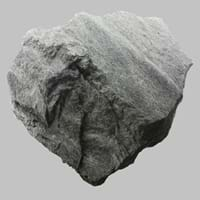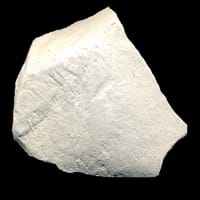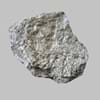Definition
Phyllite is a fine-grained metamorphic rock with a well-developed laminar structure, and is intermediate between slate and schist rocks
Chalk is a soft, white, powdery limestone consisting mainly of fossil shells of foraminifers
Discoverer
Unknown
Unknown
Etymology
From Greek phullon leaf + -ite1
From old English cealc chalk, lime, plaster; pebble, from Greek khalix small pebble, in English transferred to the opaque, white, soft limestone
Class
Metamorphic Rocks
Sedimentary Rocks
Sub-Class
Durable Rock, Soft Rock
Durable Rock, Soft Rock
Group
Not Applicable
Not Applicable
Other Categories
Coarse Grained Rock, Fine Grained Rock, Medium Grained Rock, Opaque Rock
Fine Grained Rock, Opaque Rock
Texture
Phyllitic Sheen, Slaty
Clastic or Non-Clastic
Color
Black to Grey, Light Greenish Grey
Grey, White, Yellow
Durability
Durable
Durable
Appearance
Crinkled or Wavy
Soft
Interior Uses
Decorative Aggregates, Floor Tiles, Homes, Interior Decoration
Decorative Aggregates, Homes, Interior Decoration
Exterior Uses
As Building Stone, As Facing Stone, Garden Decoration
As Building Stone, As Facing Stone, Paving Stone, Garden Decoration
Other Architectural Uses
Curbing
Powder
Construction Industry
As Dimension Stone, Building houses or walls, Cement Manufacture, Construction Aggregate, for Road Aggregate, Raw material for the manufacture of mortar, Roadstone
As Dimension Stone, Cement Manufacture, Construction Aggregate, for Road Aggregate, Making natural cement, raw material for manufacture of quicklime and slaked lime, Source of calcium
Medical Industry
Not Yet Used
Not Yet Used
Antiquity Uses
Artifacts, Sculpture
Artifacts, Monuments, Sculpture, Small Figurines
Commercial Uses
Cemetery Markers, Commemorative Tablets, Creating Artwork, Writing Slates
Alumina Refineries, Creating Artwork, Drawing on blackboards, Gymnasts, athletes and mountain climbers use for grip, In aquifers, Paper Industry, Production of Lime, Raw material for manufacture of quicklime, slaked lime, Soil Conditioner, Whiting, Whiting material in toothpaste, paint and paper
Types
Not Available
Not Available
Features
Easily splits into thin plates, Is one of the oldest rock, Surfaces are often shiny
Clasts are smooth to touch, Is one of the oldest rock, Smooth to touch, Very fine grained rock
Archaeological Significance
Monuments
Not Yet Used
Used
Famous Monuments
Not Applicable
Data Not Available
Famous Sculptures
Data Not Available
Data Not Available
Formation
Phyllite is a metamorphic rock which is formed by regional metamorphism of argillaceous sediments since their cleavage arose due to deviatoric stress.
Chalk is formed from lime mud, which accumulates on the sea floor which is then transformed into rock by geological processes.
Mineral Content
Albite, Alusite, Amphibole, Apatite, Biotite, Chlorite, Epidote, Feldspar, Garnet, Graphite, Hornblade, Kyanite, Micas, Muscovite or Illite, Porphyroblasts, Quartz, Sillimanite, Staurolite, Talc, Zircon
Calcite, Clay, Clay Minerals, Quartz, Sand
Compound Content
CaO, Carbon Dioxide, MgO
Ca, NaCl, CaO
Types of Metamorphism
Not Applicable
Not Applicable
Types of Weathering
Biological Weathering, Chemical Weathering, Mechanical Weathering
Biological Weathering, Chemical Weathering
Types of Erosion
Chemical Erosion, Coastal Erosion, Glacier Erosion, Water Erosion, Wind Erosion
Chemical Erosion, Coastal Erosion, Water Erosion
Grain Size
Medium to Fine Coarse Grained
Very fine-grained
Fracture
Conchoidal
Not Available
Porosity
Highly Porous
Highly Porous
Cleavage
Crenulation and Pervasive
Non-Existent
Specific Gravity
2.72-2.73
2.3-2.4
Transparency
Opaque
Opaque
Density
2.18-3.3 g/cm3
2.49-2.50 g/cm3
Specific Heat Capacity
Not Available
Resistance
Heat Resistant, Pressure Resistant, Water Resistant
Heat Resistant
Deposits in Eastern Continents
Asia
Afghanistan, Bangladesh, Bhutan, China, India, Japan, Kazakhstan, Malaysia, Pakistan, Russia, Thailand, Turkey, Vietnam
Brunei, India, Indonesia, Malaysia, Singapore, Thailand, Vietnam
Africa
Egypt, Ethiopia, Morocco, Nigeria, South Africa
Cameroon, Chad, Ghana, Kenya, Malawi, Sudan, Tanzania, Togo, Zambia, Zimbabwe
Europe
Austria, England, France, Georgia, Germany, Italy, Liechtenstein, Monaco, Norway, Slovenia, Spain, Sweden, Switzerland
England, France, Germany, Spain, United Kingdom
Others
Not Yet Found
Not Yet Found
Deposits in Western Continents
North America
Canada, Costa Rica, Cuba, Mexico, Panama, USA
Canada, USA
South America
Brazil, Colombia, Guyana
Colombia
Deposits in Oceania Continent
Australia
New South Wales, New Zealand, Queensland
Adelaide, New Zealand, Queensland, Tonga, Victoria, Yorke Peninsula
All about Phyllite and Chalk Properties
Know all about Phyllite and Chalk properties here. All properties of rocks are important as they define the type of rock and its application. Phyllite belongs to Metamorphic Rocks while Chalk belongs to Sedimentary Rocks.Texture of Phyllite is Phyllitic Sheen, Slaty whereas that of Chalk is Clastic or Non-Clastic. Phyllite appears Crinkled or Wavy and Chalk appears Soft. The luster of Phyllite is phyllitic while that of Chalk is dull. Phyllite is available in black to grey, light greenish grey colors whereas Chalk is available in grey, white, yellow colors. The commercial uses of Phyllite are cemetery markers, commemorative tablets, creating artwork, writing slates and that of Chalk are alumina refineries, creating artwork, drawing on blackboards, gymnasts, athletes and mountain climbers use for grip, in aquifers, paper industry, production of lime, raw material for manufacture of quicklime, slaked lime, soil conditioner, whiting, whiting material in toothpaste, paint and paper.









